EVOLUTION OF DOLINE DIVERSITY
This post continues a series exploring the idea of evolutionary creativity in Earth Surface systems (ESS). Previous posts introduce the evolutionary creativityconcept, explore the possibility of algorithmic evolution modelsof ESS, and discuss the appearance over time of new varieties of landforms.
-------------------------------------------------------------------------------------------------------
Biologists have put a great deal of effort into identifying the variety of life forms. While there is only one extant species of the genus Homoand 11 of Canis, there are more than 600 species of Quercus (oak trees) and >350,000 of beetles (and counting).

British biologist J.B.S. Haldane, when asked what he had learned of the Creator from his studies, is supposed to have answered that the Creator has "an inordinate fondness for beetles" (or words to that effect). (Photo: Cincinnatizoo.org).
ESS are at a higher level of aggregation, such that soil types, landforms, etc. are more commensurate with, say, biological communities than with species or other biological taxonomic levels. Still, we have put a lot less effort into cataloging variety of ESS. More than a century soil classification and mapping, for instance, has so far identified <20,000 different soil types (series) in the USA.
Landforms are classified in even less detail than soils (note that there exists no generally accepted scheme of geomorphic taxonomy or landform mapping). Even a treatise on aeolian geomorphology, for instance, will recognize perhaps a couple of dozen types of sand dunes, while even my limited observations suggest that the variety--considering sizes, shapes, activity, behavior, composition, soil & vegetation development, subsidiary features, etc.--is pretty much limitless. This, of course, hampers any effort to assess the appearance of new varieties.
The level of classification detail varies in different areas of geomorphology. For example, some stream channel classifications are very detailed--at least compared to those for other landforms. Still, even for stream channels the level of detail is orders of magnitude less than that for soil taxonomy, which is far less than for biota.
So I did a little thought experiment with respect to dolines. Dolines are karst sinkholes. As far as I can tell, geomorphologists recognize just four to six basic types, depending on whether they are formed primarily by dissolution from the top down, or collapse into a subsurface dissolutional cavity, and whether there exists a layer of regolith overlying the dissolving rock or not.
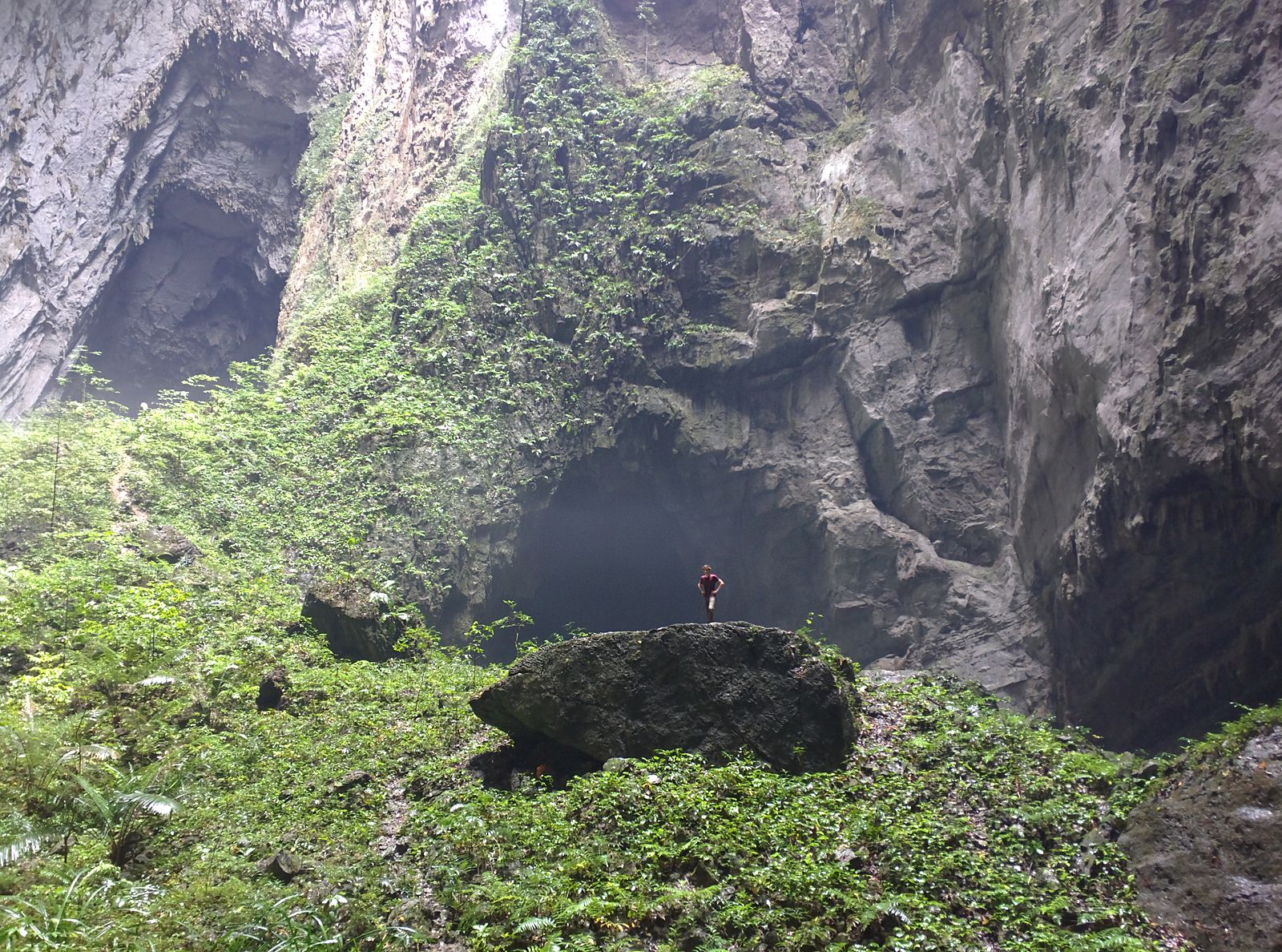
Dolines overlying Hang Son Doong cave, Vietnam (https://en.wikipedia.org/wiki/File:Son_Doong_Cave_Doline_with_Scale.jpg)
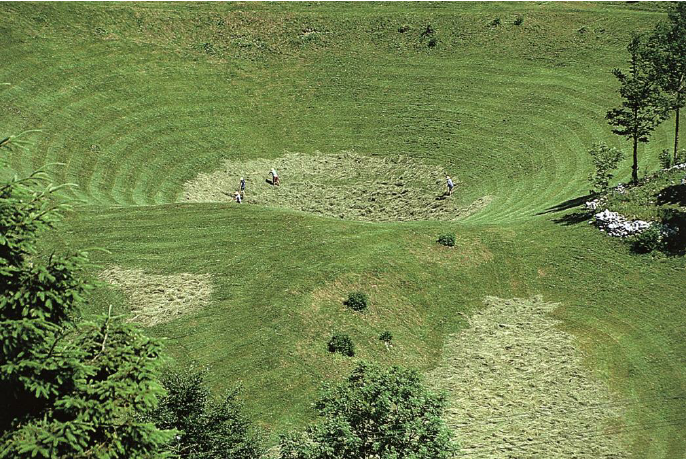
Solutional doline, Slovenia (photo: Matej Gabrovec)
I did this experiment using two guiding principles. First, before you can have dolines you must have karst, and before you have karst you have to have carbonate rocks. Carbonate rocks cannot form until the appearance of calcium-precipitating and concentrating organisms. Second, there has to be a first time for everything. That is, the contemporary range of karst features cannot have appeared simultaneously. The result is the figure below.
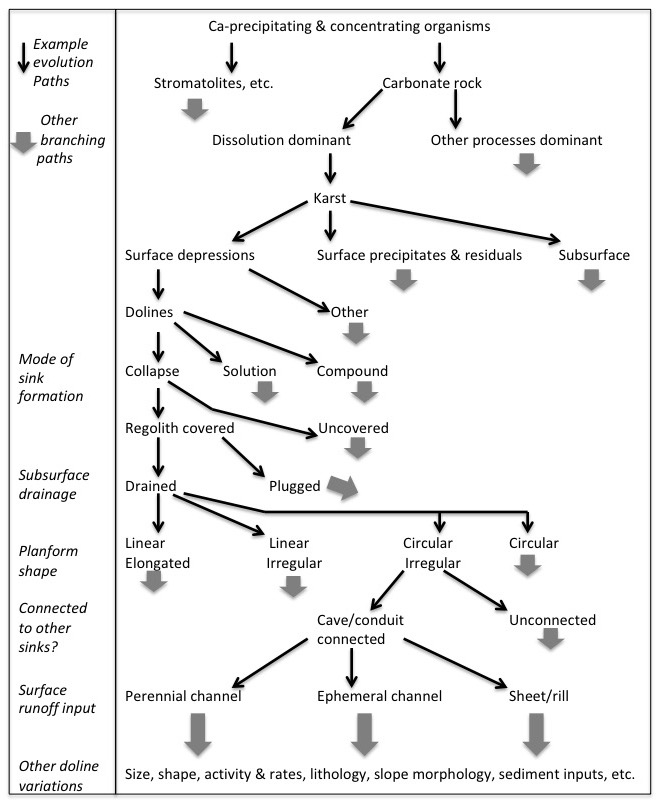
The upper part, from the top of the figure down to "karst," can be viewed as chronological, according to the first guiding principle above. Beyond that, it identifies some of the variation that occurs, focusing on the dolines I'm most familiar with in Kentucky--regolith covered, collapse-type, drained by karst conduits, roughly circular in planform, and often connected to each other by underlying conduits or cave systems. The fat arrows in the diagram show many other pathways that could be followed, leading to many more types of dolines (and other karst landforms). The bottom line indicates someof the other significant ways dolines can differ. How many possibilities are there, even for collapse dolines? I don't know, but--a lot!
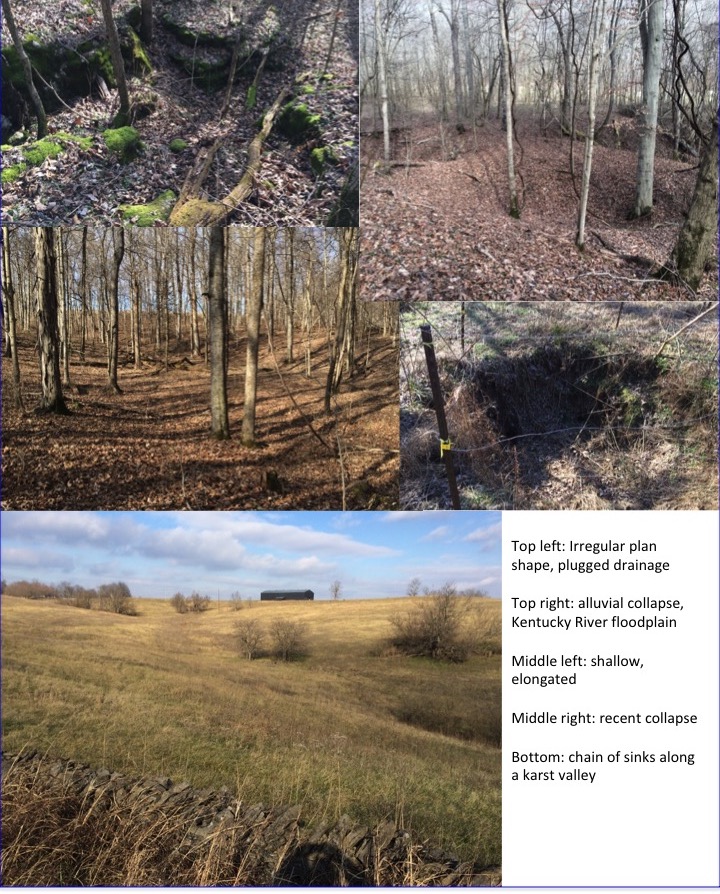
Collapse dolines in central Kentucky.
Paleokarst appears in the geologic record from the early Proterozoic, roughly two billion years ago. From that time, whatever the first karst landforms were have diversified into what we have at present (though some types may have gone extinct). This thought experiment for dolines--and the same could no doubt be done for sand dunes, solifluction lobes, oxbow lakes, or any number of features--convinces me, at least, that "creativity" has occurred (and is occurring) in the evolution of landforms and other Earth Surface Systems.
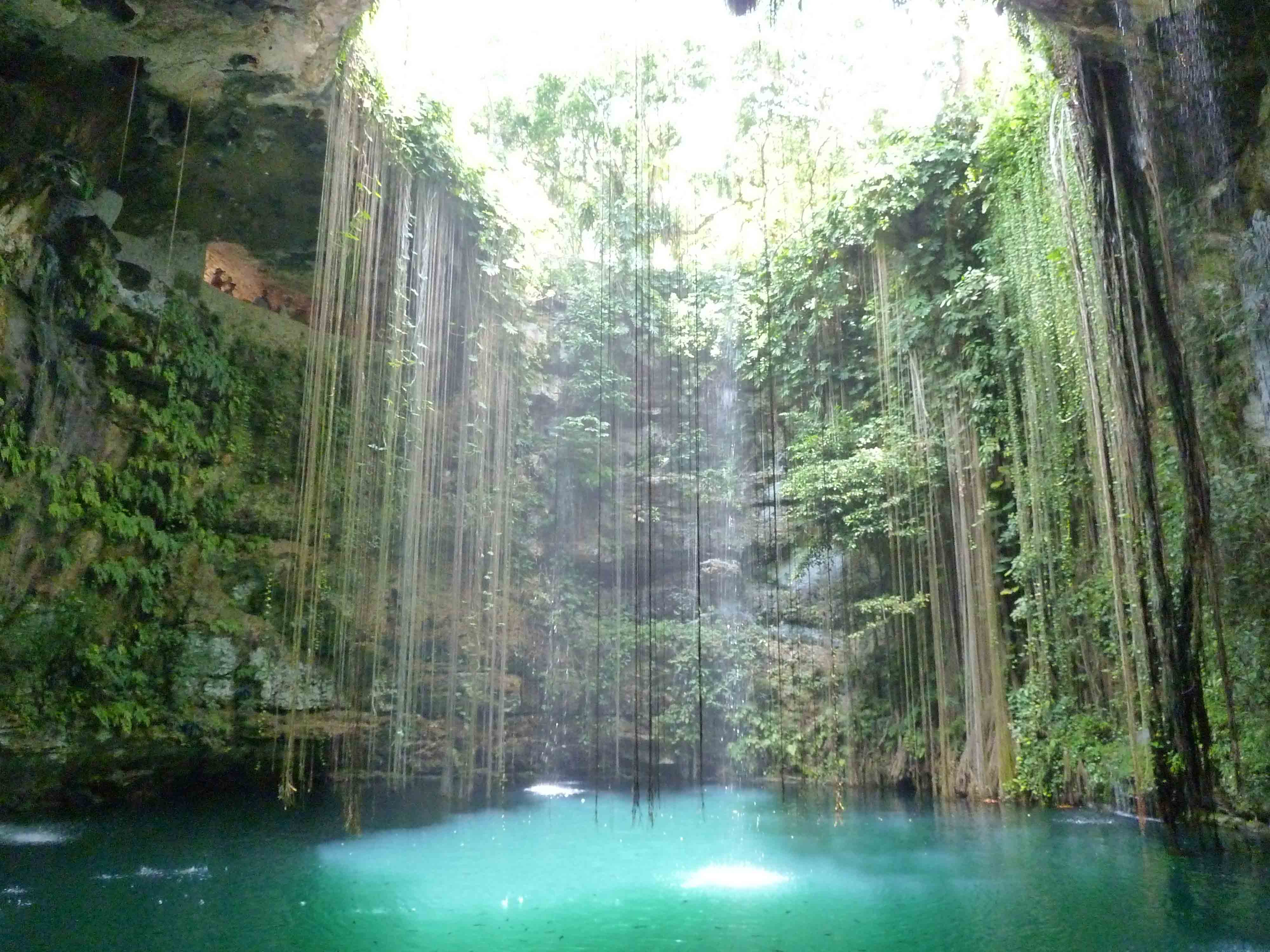
Ik Kil Cenote, a doline in Mexico (www.worldfortravel.com)
-----------------------------------------------------------------------------------------------------------------------------------------
Posted 12 June 2018
